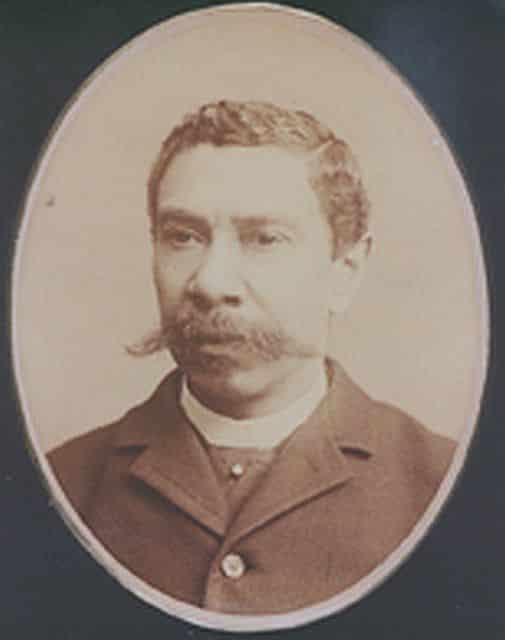By Dorothy Salem
John Patterson Green (April 2, 1845-September 1, 1940) is known as the “Father of Labor Day” due to legislation he proposed in 1890 as an Ohio state legislator to recognize Labor Day as a state holiday. The trailblazer was the second African American to serve in the Ohio House of Representatives and the first to serve in the Ohio Senate.
His parents, John R. and Temperance Green were free blacks living in New Berne, NC who moved to Cleveland in 1857. John had to leave school to help support the family, but he continued to read and learn. Ten years later, he published Essays on Miscellaneous Subjects by a Self-Educated Colored Youth (1866) and returned to attend Central High School (1866-69), the first public high school in Cleveland.
Upon graduation, he married Annie Walker, with whom he had four children: William, Theodore, Jesse and Clara. The following year, he finished his studies at Union Law School, moved to South Carolina and was admitted to the bar. The South held promise since the end of the Civil War and Reconstruction provided constitutional protections for blacks and promising careers for black Republicans.
After only two years, Green returned to Cleveland to pursue his political dreams. He became the first black elected to office in Cleveland as the Justice of the Peace. A Republican, Green held that post for nine years. In 1881, he published Recollections of the Carolinas. During that same year he ran for and won a seat in the Ohio House of Representatives where he proposed the Labor Day legislation.
In 1892, he became the Ohio Senate’s first black member and the only black legislator in the North until the 20th century. He became a founding member of St. Andrews Episcopal Church. His Cleveland Republican ties to Marcus A. Hanna, businessman and supporter of William McKinley, and to barbershop owner, George A. Myers, brought Green an appointment as U. S. postage stamp agent, a position he held 1897-1905.
He also served as acting superintendent of finance in the Post Office Department before returning to his law practice in 1906.
His wife died in 1912 and he later married Lottie Mitchell Richardson. During these years he compiled the stories of his life which resulted in his autobiography, “Fact Stranger than Fiction” (1920). At age 95, a car struck Green while crossing the street. He died from his injuries.




